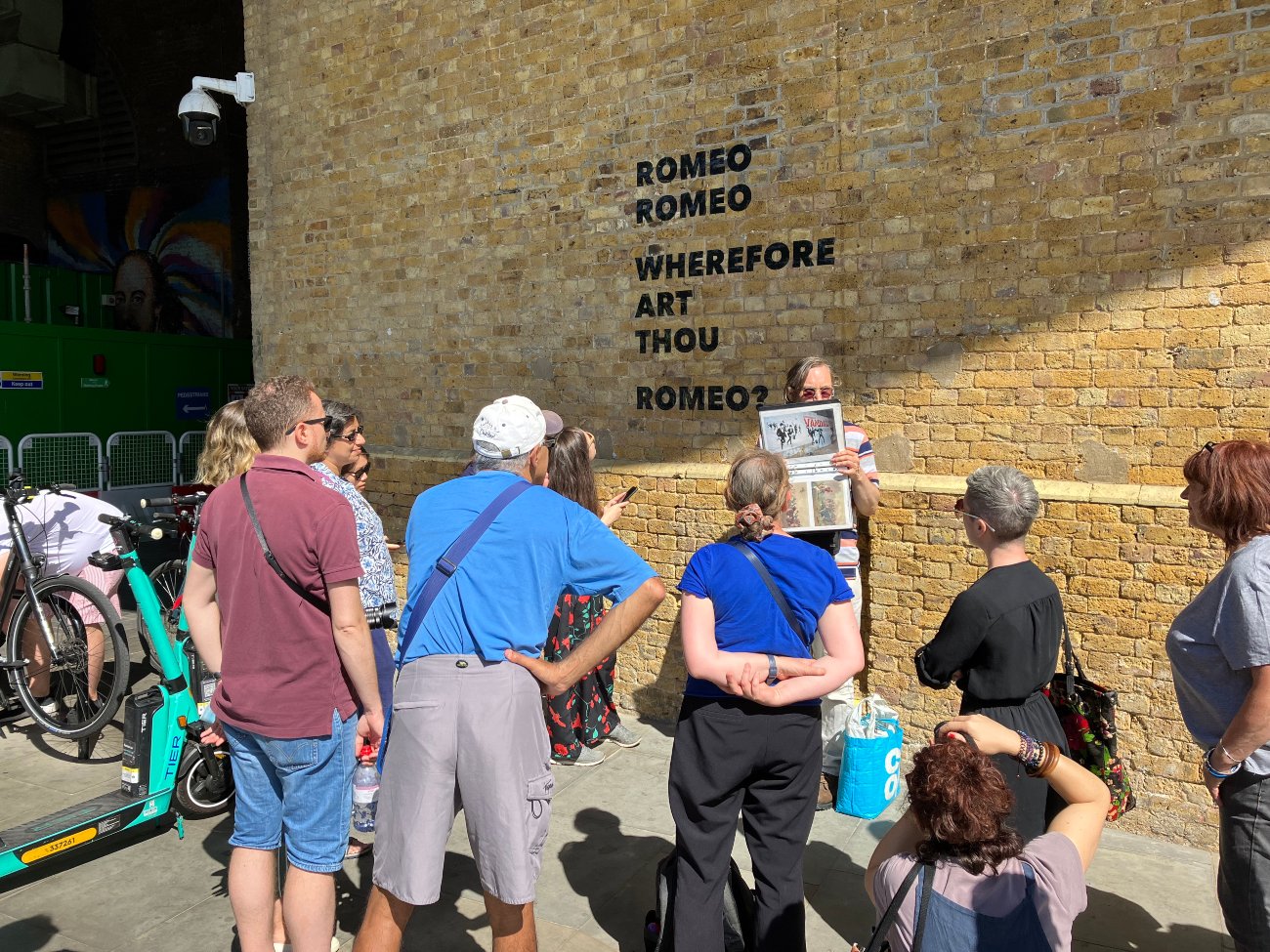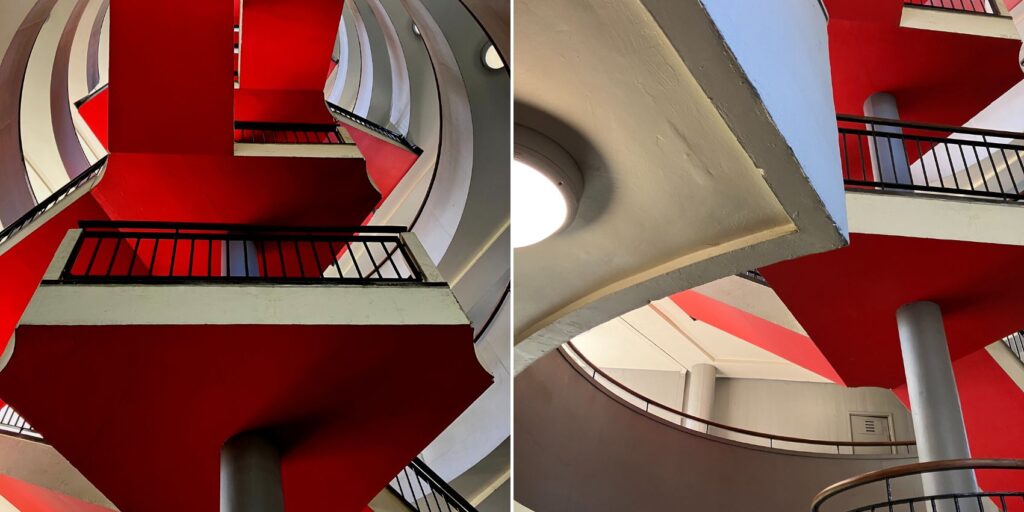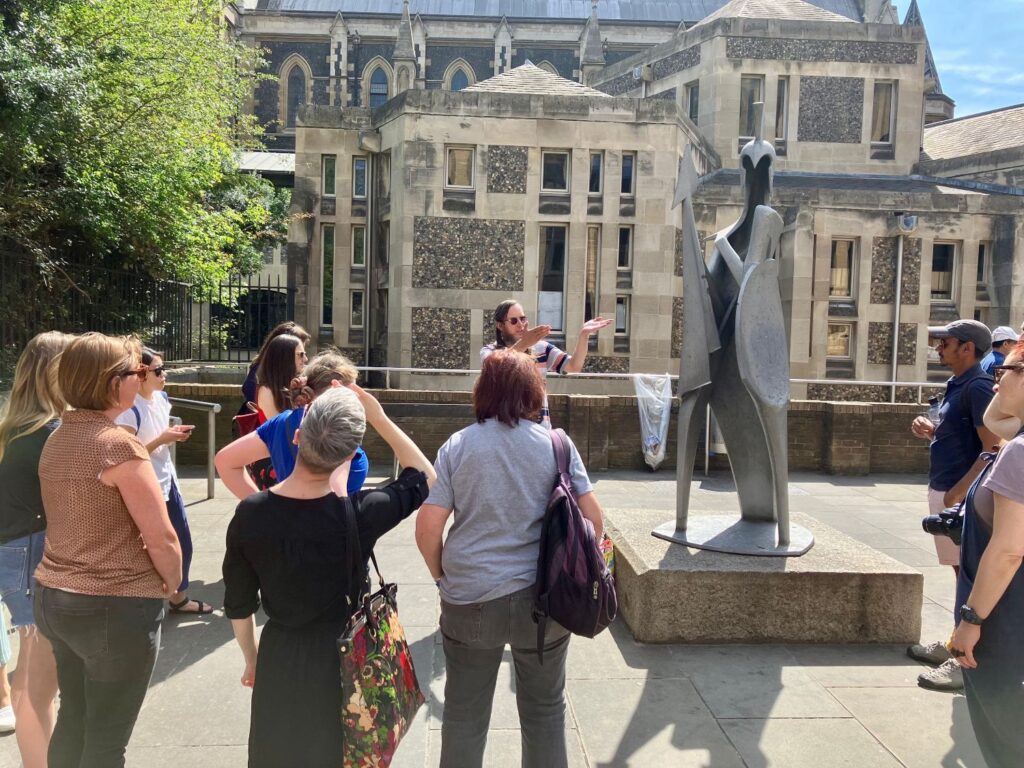
London Unseen: Walking with Unseen Tours
- 3 September 2022
- by
Vanessa Ansa, London Unseen
I recently had the pleasure of joining two guided walks with Unseen Tours: one in the King’s Cross/Clerkenwell area, the other in London Bridge. Both walks were part of London Unseen, a season of community-led heritage trails and tours, funded by the Mayor of London’s Commission for Diversity in the Public Realm.
They offered different insights into the histories of these areas, and equally engaging framings of life and society in London, past and present.
From the descriptions of the walks, I anticipated learning about historical stories of times past; discovering something new of what had once been. What I learned was more layered. Alongside historical tales, what I found most piercing was hearing about how the experiences and challenges of homelessness are imprinted, yet largely (and often purposefully-so) made invisible in the spaces we all seemingly share. Spaces which are occupied in markedly different ways by those going through homelessness; those who are forced to navigate public spaces in very different ways.

The King’s Cross & Clerkenwell Tour
On the King’s Cross/Clerkenwell tour, the political workings of capitalism and socialism were juxtaposed. I appreciated being able to visit Bevin Court to see an example of post-war, modernist social housing. The staircase, whose ceilings are painted a vivid red, and the mural which adorns the entrance to the block of flats (and reminds me of Pablo Picasso’s Guernica), are probably the photographs I look at most often from this tour.
This walk made me think about the relationship of the culture that has emerged out of capitalism’s constructs and structures, and which naturalises certain ways of thinking and behaving. I considered how the decisions that are made about housing, ownership, and the legal frameworks that control public space, and which are part of the heritage of a society, can enable the treatment of people as though they are dispensable. It helped me recognise the consequences for people who have valuable things to offer to society, but who are pushed to its edges.
I found that being guided by someone with direct experience of living on the margins of these structures offered a unique and expanded perspective on the spaces I often traverse without necessarily understanding their hidden sides.
Our guide, it turned out, is also a trained actor! Imagining the muddy and murky edges of London (where King’s Cross Station stands now) and hearing his performance of a highwayman – very politely – intimidating his victims, was an unexpected surprise, and it was brilliant! It brought history to life and fed my imagination.

David’s trail took us around London Bridge and along the south bank. His tour brought me closer to some of the more intimate realities of homelessness. And also its many guises.
Weaved in amongst tales of blood-lusty Elizabethans, Southwark Cathedral and Shakespeare’s Globe, David shared poignant and personal stories of homelessness as experienced by himself and other people he knows.
Along this trail, there were several reminders of how architecture and public spaces have been purposely altered in order to repel people who are homeless from having a place to rest which is slightly sheltered or moderately warm. Seeing these spaces, and hearing David speaking about the lives that have occupied them, added new meaning to them for me.
The Crossbones Graveyard, which we visited towards the end of the trail, was for centuries a ‘paupers’ graveyard’. It closed in 1853, holding the remains of about 15,000 people. It was incredibly moving to see the memorial shrine made up of messages and ribbons tied to its railings – the oldest dating from the 1700s, and many more added up till today. Being closed, we couldn’t get inside the graveyard, but the site was transformed into a public garden of remembrance between 2014-2019.
It was a privilege to be guided by people who know the streets of London so intimately, having themselves experienced homelessness. I came away from these walks feeling like I had had a rare opportunity.
By centring and giving agency to marginalised voices, these walks offer a unique and very special lens from which to look at London’s history.
______
Vanessa works with Damali Ibreck, producing the London Unseen season. They invite you to dip into their season calendar which runs until November 2022, where you’ll find many opportunities to learn about the histories of diverse communities whilst being guided through London’s streets and spaces. To connect with Vanessa, follow @good_for_the_gander on Instagram.